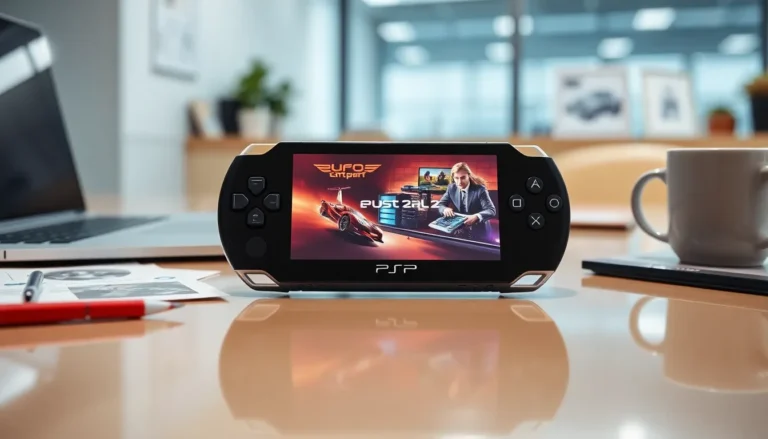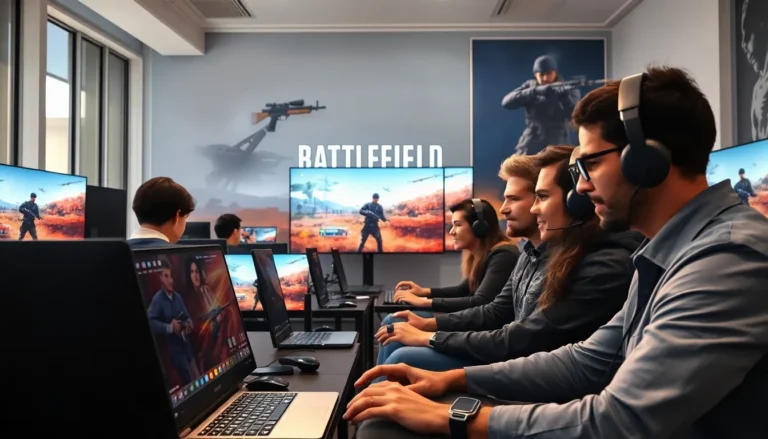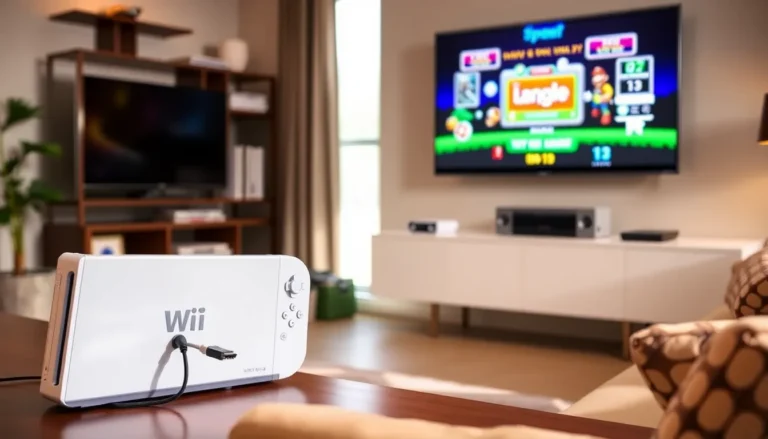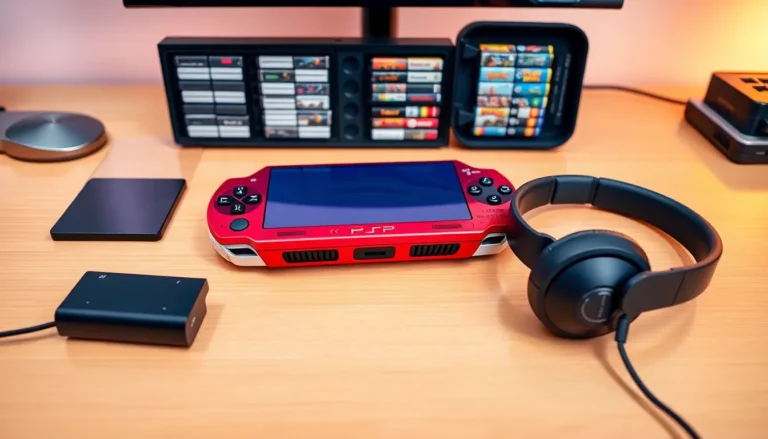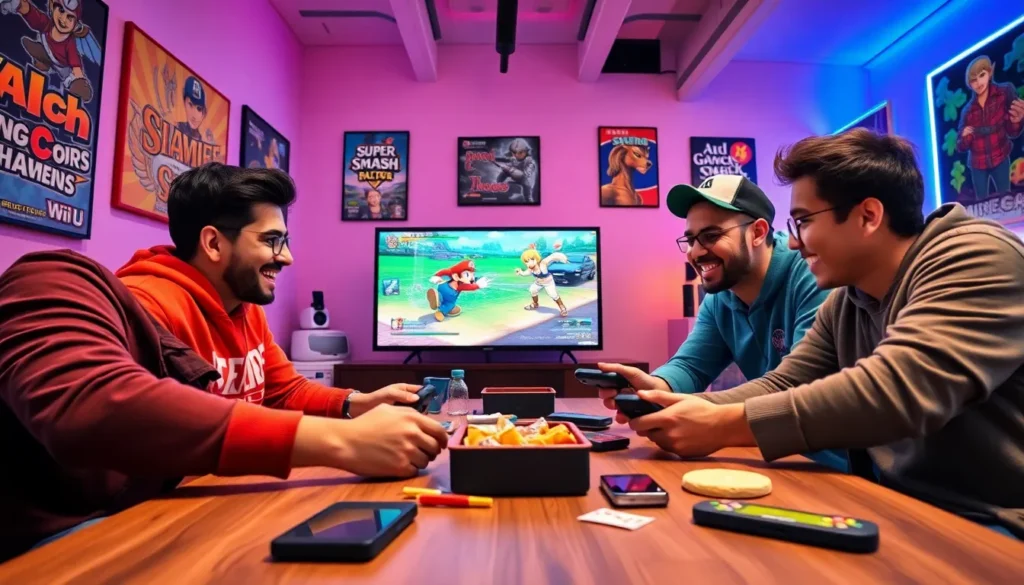Table of Contents
ToggleIf gaming had a royal family, the Super Smash Bros. series would definitely be the raucous cousin everyone loves but no one knows how to handle. With its wild mashup of beloved characters, this title for both the Nintendo 3DS and Wii U proves that battling it out can be both chaotic and exhilarating. It’s like a fight club, but with more charm and far fewer rules. This article dives into this fighting fiesta, exploring what makes this installment a staple in the gaming world.
Overview of Super Smash Bros. Franchise
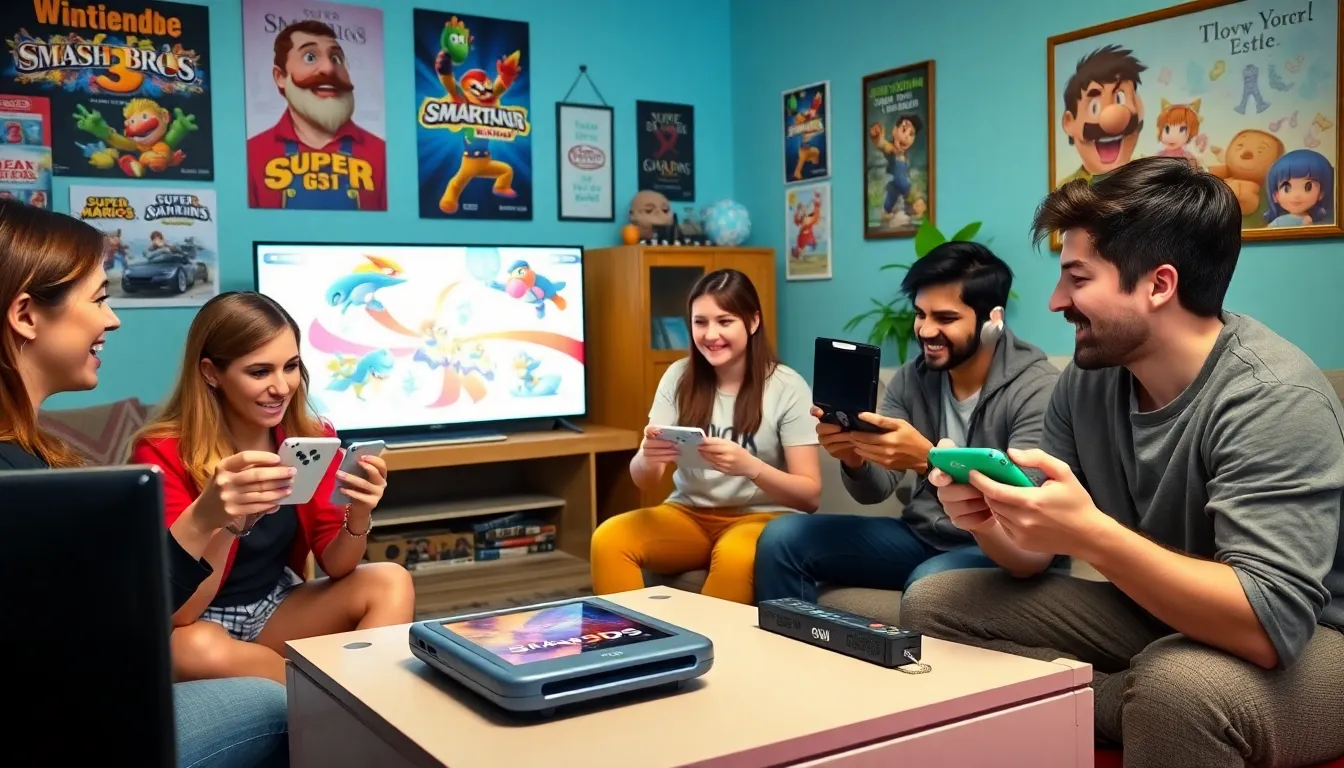
The Super Smash Bros. franchise has been a pivotal part of gaming since its debut in 1999 on the Nintendo 64. Combining iconic characters from various Nintendo games, it brought forth an innovative approach to fighting games. Instead of health bars, players aim to knock opponents off the stage, resulting in a unique blend of strategy and mayhem.
Within the franchise, each installment has introduced new characters, stages, and mechanics, evolving with the gaming industry while maintaining that essential Smash charm. The latest iterations for the Nintendo 3DS and Wii U embraced both handheld accessibility and console power, appealing to a broad audience of casual gamers and dedicated fans alike. This versatility is a cornerstone of the franchise, building a legacy that continues to resonate across generations.
Key Features of Super Smash Bros. For Nintendo 3DS And Wii U
This version of Super Smash Bros. isn’t just a port of its predecessors, it combines features that cater to both casual and hardcore gamers. One standout characteristic is the sheer number of playable characters. Players can choose from over 50 fighters, including favorites like Mario, Link, and Pikachu, as well as newcomers such as Mega Man and the Villager from Animal Crossing.
Then there are the stages, with each one bringing its own flavor and hazards. From the classic Battlefield to the vibrant stages inspired by various Nintendo franchises, every battlefield offers a unique experience that can shift the tide of battle. Players also enjoy customization options, allowing for personalized control schemes and character aesthetics, enhancing the engagement factor.
Gameplay Mechanics and Controls
Character Roster and Customization Options
The heart of Super Smash Bros. beats strongest in its roster. Whether one prefers fast-paced fighters like Fox or heavy hitters like Bowser, players can find a character that resonates with their style. Customization options also take this a step further. Players can tweak their fighter’s abilities, choosing moves and equipment that cater to their gameplay preferences, making each battle feel unique.
Stages and Environments
With stages ranging from the serene Dream Land to the chaotic Final Destination, the design plays a huge role in shaping combat dynamics. Each arena not only tests players’ skills but provides opportunities for strategic advantages, rising platforms, falling debris, and item spawns all contribute to a vibrant battlefield. The attention to detail in these environments adds layers to the combat, giving players a reason to come back to each stage.
Online Multiplayer Experience
The online multiplayer experience in Super Smash Bros. for Nintendo 3DS and Wii U elevates the competitive nature of the game. Players can engage in battles with friends or join random fighters worldwide. The ability to create rooms and host tournaments ensures that there’s always an exciting match just a click away. Also, with the inclusion of tournaments, players can challenge peers and track their skills through rankings, further immersing them in the Smash community.
Comparing Nintendo 3DS And Wii U Versions
While both versions of Super Smash Bros. are rich in content, they cater to different gaming preferences. The Nintendo 3DS version allows players to enjoy the game on the go, making it ideal for quick matches during commutes. But, it comes with limitations in graphical fidelity compared to the Wii U version, which boasts enhanced visuals and the ability to play on a larger screen.
Also, the Wii U supports additional features like eight-player battles and enhanced local multiplayer options, adding depth to the playing experience. In essence, the choice between the two largely hinges on whether players prioritize portability or an immersive home console experience.
Legacy and Impact on Gaming Culture
The impact of Super Smash Bros. on gaming culture is nothing short of monumental. It transformed the way gaming communities engage with competition and camaraderie. Tournaments like Evo have showcased Smash Bros. as a staple in the eSports scene, prompting legions of fans to rally behind their favorite fighters.
Also, the franchise has inspired countless memes and social media content, embedding itself into the broader pop culture landscape. It champions the idea that games, regardless of their competitive nature, can bring people together, sparking friendships forged through fierce battles and shared memories.

